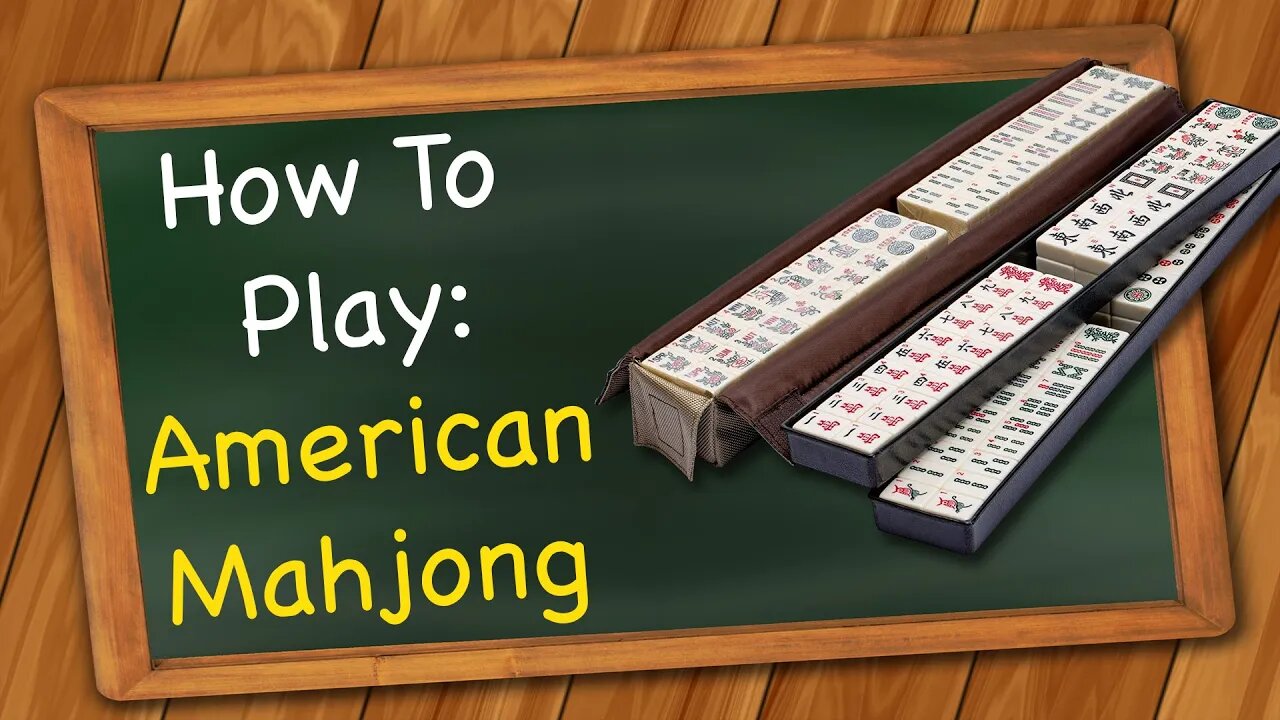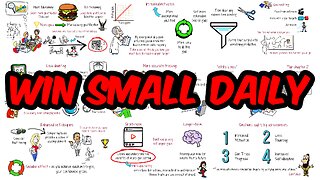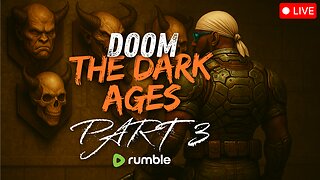Premium Only Content

How to play American Mahjong
Learn the rules to the board game American Mahjong quickly and concisely - This video has no distractions, just the rules. To learn how to setup the game, check out this video: https://youtu.be/OALaYrdYZL0
Don't own the game?
USA - buy it here: https://buy.triplesgames.com/AmericanMahjong
Canada - buy it here: https://buy.triplesgames.com/CAamericanmahjong
UK - buy it here: https://buy.triplesgames.com/UKamericanmahjong
(These Amazon Affiliate links directly supports me)
RULES:
The object of this 4-player game is to be the first person to declare "Mahjong" by correctly creating a hand that exactly matches a hand on the score card.
Since East has 14 tiles, they start the game by discarding a tile. If the discarded tile is not claimed by other players, referred to as a call, the turn continues to the next player on the right. The next player draws a tile from the wall. The tile is taken from where the breaking of the walls was left off. When a player draws a tile from the wall, they take the top tile if the next tile in the stack is two tiles high, otherwise, they take the bottom tile.
The player either decides to discard the drawn tile or to place it in their hand and then discard another tile from her hand. The name of the discarded tile is announced and placed face up in the center of the table.
If the discarded tile is not called, the turn continues to the next player on the right. The sequence of drawing, discarding, and continuing turns is repeated unless interrupted by a call.
The most recent discard may be called by any player if the tile completes a pung, kong, quint, sextet, or another combination of an exposed hand. A tile may not be called to complete a combination of the hand that requires only a single tile, nor to complete a pair unless it completes a mahjong hand.
Tiles discarded prior to the most recent cannot be called and are dead tiles. If a player calls to take a discarded tile and it does not result in mahjong, the combination it completes must be exposed face up on top of their rack for everyone to see and cannot be changed for the rest of the game. The player then discards a tile and if it isn't called by another player, the turns continue with the player to the right. Note that some players may have their turns skipped when a tile is called.
If more than one person calls: The player who calls a tile to complete a mahjong hand trumps calls by any other player to complete a set. When none of the calls are to complete a mahjong hand, the player nearest in turn receives the discard.
Note: When aiming for a concealed hand all of the tiles in your hand must be drawn from the wall. None of them may be called tiles except for the last tile which would allow you to declare Mahjong.
Jokers can substitute any tile in a pung, kong, quint or sextet combination. They may not be used to complete a pair or single tiles in a hand. If a player has an exposed combination with a joker substituting a tile and you have the actual tile the joker is substituting, you may exchange that tile for the joker in the following manner: Call a discard or draw a tile from the wall on your turn as you normally would. Exchange the actual matching tile with the exposed substituting joker. Multiple matching tiles may be exchanged for multiple exposed jokers. Discard a tile to maintain the proper tile count in your hand. After exchanging for a joker, it is not necessary to expose tiles if that joker creates a combination in your hand. Jokers exposed in dead hands (hands that are out of the game due to violating rules), may be exchanged.
The game ends when either someone declares "mahjong" or when there are no more tiles in the wall to be drawn. When a 14th tile drawn from the wall or called from a discard completes a hand on the score card, a mahjong is created. The player then declares "Mahjong" and wins the game.
If mahjong has not been called and all the tiles have been drawn from the wall and the last discard has been made then the game ends in a draw. No payouts are made.
After each game, the position of East continues to move counter-clockwise. The process of shuffling the tiles, rebuilding the walls, and dealing is repeated until the games end.
-
 1:19
1:19
Triple S Games
1 year ago $0.03 earnedHow to play Chosen Chess
659 -
 LIVE
LIVE
Major League Fishing
3 days agoLIVE! - Bass Pro Tour: Heavy Hitters - Day 1
1,404 watching -
 8:00:02
8:00:02
SpartakusLIVE
11 hours agoWZ Solos || #1 Challenge MASTER brings you Saturday SPARTOONS
58.6K1 -
 9:05:51
9:05:51
Spartan (Pro Halo esports Player)
13 hours agoNo Scrims today so Ranked for a bit then SWTOR
43.1K -
 58:42
58:42
Sarah Westall
13 hours ago500 Vaccine Schedule, WHO & UN Deception, Cyborg Depopulation Agenda w/ Dr. Rima Laibow
79.8K25 -
 9:15
9:15
The Art of Improvement
2 days agoThe Power of Micro-Goals
35.1K3 -
 16:16
16:16
megimu32
20 hours agoKerplunk Unboxing: Loud, Chaotic & Definitely a Sibling Trap
23.9K17 -
 22:55
22:55
marcushouse
21 hours ago $1.22 earnedStarship’s Flight Plan Just Took an Unexpected Turn!
20.1K8 -
 1:29
1:29
Memology 101
1 day ago $1.66 earnedShe just SNITCHED on her ENTIRE party…😂😂😂
16.1K16 -
 4:53:29
4:53:29
IcyFPS
10 hours agoDOOM x WARZONE | Chapters 9-14 | LETS GO!! | Direct RTMP |
11.2K1